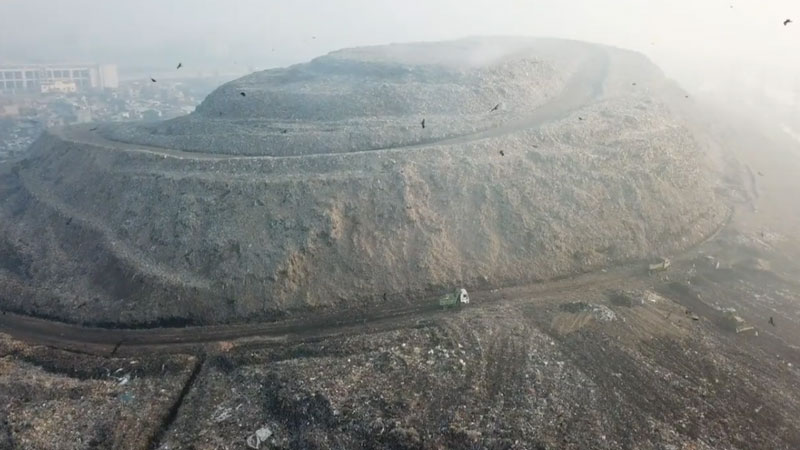Timarpur Okhla Waste Management Company Ltd. (TOWMCL) has processed approx. 6 million metric tons of wastes up to March 2021 since inception of the plant operation and hence prevented major environmental degradation.
If these 6 million tons of waste would have landed into the landfill, then Delhi would have faced following adverse effects:
LAND
Siting a landfill requires an extensive evaluation process to identify the optimum available disposal location. This location must comply with the requirements of the existing governmental regulations and at the same time must minimize economic, environmental, health and social costs.
As per the “Estimation of Landfill Capacity, Landfill Height, Landfill Area” given by the Central Public Health and Environmental Engineering organisation [4], considering total waste processed/treated till March 2021 and landfill height of 20 m, approx. 98 acres of area
considering bulk density of waste to be 0.85 t/cu.m. [4] was required to dump 6 million metric tons of waste.
EMISSIONS
Waste at the landfills have been known to be one of the major sources of anthropogenic greenhouse gas (GHG) emission and a key contributor to global warming [5]. Methane (CH4) emission from landfill is estimated to account for 3% - 19% of the anthropogenic sources in the world [5]. CH4 alone constitutes about 29% of the total GHG emissions in India which is nearly twice the worldwide average of 15% [6]. Methane is contributing more to the global warming than carbon dioxide (CO2)
Considering First Order Decay Model (FOD) Method for calculating Gg/Yr., in the absence of waste processing unit/plant, the estimated quantity of methane emission from the 6 million tonnes of waste would have been following:
| Year | Methane emissions by FOD Method (Gg/yr.) |
|---|---|
| 2012-2013 | 66.15 |
| 2014-2015 | 72.92 |
| 2015-2016 | 74.71 |
| 2016-2017 | 67.84 |
| 2017-2018 | 75.52 |
| 2018-2019 | 68.30 |
| 2019-2020 | 62.63 |
| 2020-2021 | 75.19 |
- Gg = gigagram = 109 g
LEACHATE
The most common danger to human health from landfills is from the use of polluted groundwater, which has been contaminated by leachate produced from the landfills. Apart from groundwater contamination, leachate percolation into soil results in soil contamination and become environmental hazards for years.
The Leachate Pollution Index value of 42.181 for the Okhla Landfill site indicates that the Leachate generated from this landfill is highly contaminated [7].
The quantity of leachate generation increases with the increased quantity of municipal solid waste. By the treatment of municipal solid waste, the quantity of leachate generation was decreased over the time and the possibility of ground water and soil contamination was reduced too. Due to 6 million metric tons approx. 1,19,117.65 Kilo Litres [8] leachate would have generated.

